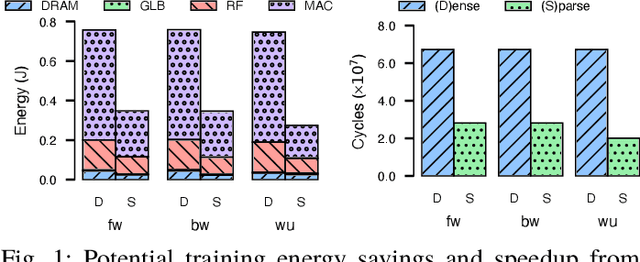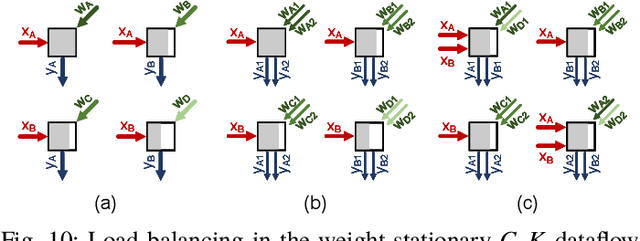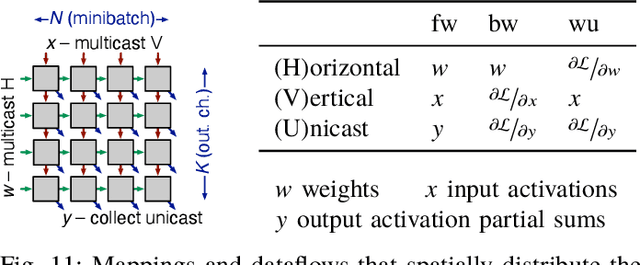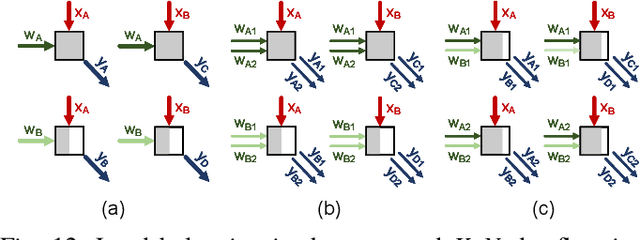Xiaowei Ren
Nemotron-H: A Family of Accurate and Efficient Hybrid Mamba-Transformer Models
Apr 10, 2025Abstract:As inference-time scaling becomes critical for enhanced reasoning capabilities, it is increasingly becoming important to build models that are efficient to infer. We introduce Nemotron-H, a family of 8B and 56B/47B hybrid Mamba-Transformer models designed to reduce inference cost for a given accuracy level. To achieve this goal, we replace the majority of self-attention layers in the common Transformer model architecture with Mamba layers that perform constant computation and require constant memory per generated token. We show that Nemotron-H models offer either better or on-par accuracy compared to other similarly-sized state-of-the-art open-sourced Transformer models (e.g., Qwen-2.5-7B/72B and Llama-3.1-8B/70B), while being up to 3$\times$ faster at inference. To further increase inference speed and reduce the memory required at inference time, we created Nemotron-H-47B-Base from the 56B model using a new compression via pruning and distillation technique called MiniPuzzle. Nemotron-H-47B-Base achieves similar accuracy to the 56B model, but is 20% faster to infer. In addition, we introduce an FP8-based training recipe and show that it can achieve on par results with BF16-based training. This recipe is used to train the 56B model. All Nemotron-H models will be released, with support in Hugging Face, NeMo, and Megatron-LM.
Training Video Foundation Models with NVIDIA NeMo
Mar 17, 2025Abstract:Video Foundation Models (VFMs) have recently been used to simulate the real world to train physical AI systems and develop creative visual experiences. However, there are significant challenges in training large-scale, high quality VFMs that can generate high-quality videos. We present a scalable, open-source VFM training pipeline with NVIDIA NeMo, providing accelerated video dataset curation, multimodal data loading, and parallelized video diffusion model training and inference. We also provide a comprehensive performance analysis highlighting best practices for efficient VFM training and inference.
Cosmos World Foundation Model Platform for Physical AI
Jan 07, 2025



Abstract:Physical AI needs to be trained digitally first. It needs a digital twin of itself, the policy model, and a digital twin of the world, the world model. In this paper, we present the Cosmos World Foundation Model Platform to help developers build customized world models for their Physical AI setups. We position a world foundation model as a general-purpose world model that can be fine-tuned into customized world models for downstream applications. Our platform covers a video curation pipeline, pre-trained world foundation models, examples of post-training of pre-trained world foundation models, and video tokenizers. To help Physical AI builders solve the most critical problems of our society, we make our platform open-source and our models open-weight with permissive licenses available via https://github.com/NVIDIA/Cosmos.
Procrustes: a Dataflow and Accelerator for Sparse Deep Neural Network Training
Sep 23, 2020



Abstract:The success of DNN pruning has led to the development of energy-efficient inference accelerators that support pruned models with sparse weight and activation tensors. Because the memory layouts and dataflows in these architectures are optimized for the access patterns during $\mathit{inference}$, however, they do not efficiently support the emerging sparse $\mathit{training}$ techniques. In this paper, we demonstrate (a) that accelerating sparse training requires a co-design approach where algorithms are adapted to suit the constraints of hardware, and (b) that hardware for sparse DNN training must tackle constraints that do not arise in inference accelerators. As proof of concept, we adapt a sparse training algorithm to be amenable to hardware acceleration; we then develop dataflow, data layout, and load-balancing techniques to accelerate it. The resulting system is a sparse DNN training accelerator that produces pruned models with the same accuracy as dense models without first training, then pruning, and finally retraining, a dense model. Compared to training the equivalent unpruned models using a state-of-the-art DNN accelerator without sparse training support, Procrustes consumes up to 3.26$\times$ less energy and offers up to 4$\times$ speedup across a range of models, while pruning weights by an order of magnitude and maintaining unpruned accuracy.
 Add to Chrome
Add to Chrome Add to Firefox
Add to Firefox Add to Edge
Add to Edge